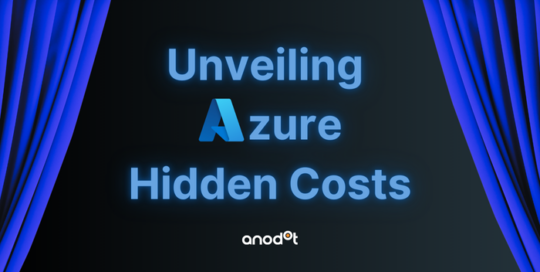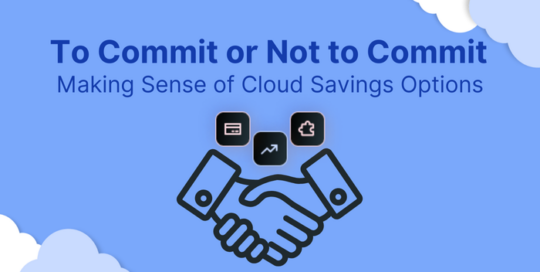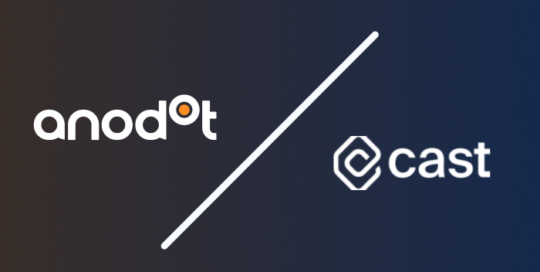As with all Microsoft Azure pricing, storage pricing can be confusing. With cloud storage-specific tiers, reservations, time lengths, and other cost considerations, starting monthly budget calculations can be more than intimidating—especially since you’ll also want to watch out for any extra provider-specific fees.
We’ll break things down so you can easily calculate your Azure storage pricing.
In this article:
- How does Azure storage pricing work?
- Azure storage costs overview
- Azure storage vs AWS and GCP storage costs
- How to optimize Azure storage costs
How does Azure storage pricing work?
Let’s break down how Azure storage prices work before we go into the different cloud storage types.
Azure Storage costs depend on:
- Customer region
- Number of transactions
- Data egress
- Type of storage used
- Payment plan
Azure storage costs overview
Here’s an overview of some of the most common types of Azure storage and the starting prices for each:
| Storage Type | Description | Price |
| Azure Blob | Scalable document, image, binary data, or unstructured text storage. | Starts at $0.015 per GB per month |
| Azure Files | Cloud-based file shares designed for Windows API or REST API. | Prices start at $0.0228 per GiB per month |
| Azure Table | NoSQL storage designed for web applications’ unstructured and semi-structured data. | Prices start at $0.045 per GB per month |
| Azure Queues | Messing solution made to store asynchronous processed app messages. | Prices start at $0.045 per GB per month |
| Azure Managed Disks | Easily scalable virtual machine deployment disks. | Prices start at $0.30 per GB per month |
Now that you have an overall idea of the different kinds of storage and prices let’s explore each kind in more detail to determine which works best for your company.
Azure Blob storage cost
Azure Blob is the ideal service for storing large amounts of unstructured data like videos, backups, and images. Prices fluctuate depending on your chosen data volume, storage tier, and if you decide to select pay-as-you-go or reserved capacity.
Here’s what your Azure Blob storage pricing will look like if you decide to go with the pay-as-you-go model:
| Pay-as-you-go | Premium | Hot | Cool | Archive |
| First 50 terabyte (TB) / month | $0.15 per GB | $0.021 per GB | $0.015 per GB | $0.00099 per GB |
| Next 450 TB / month | $0.15 per GB | $0.02 per GB | $0.015 per GB | $0.00099 per GB |
| Over 500 TB / month | $0.15 per GB | $0.0191 per GB | $0.015 per GB | $0.00099 per GB |
You can save money if you know how much storage capacity you need for the next one or three years by using Azure Storage Reserved Capacity. For one year reserved, you can purchase 100 TB per month for $1,747 for Hot, $1,277 for Cool, and $91 for Archive. For three years reserved, you can buy Hot for $1,406 monthly, Cool for $1,028, and Archive for $84.
Proceed with caution, though. Blobs are subject to an early deletion penalty if they are overwritten, moved, or deleted before the minimum number of days specific to the blob’s tier is met. Archive-tier blobs are subject to a 180-day early deletion period, cold-tier blobs are 90 days, and cool-tier blobs are 30 days.
Azure Files storage cost
Azure Files is a great choice for cloud-based applications’ file-shared services. The price depends on your storage tier and capacity and whether you choose the pay-as-you-go method or the one—or three-year commitment.
Pay-as-you-go pricing tiers look like this:
| Data storage | Premium | Transaction optimized | Hot | Cool |
| Data at-rest (GiB/month) | $0.16 per provisioned GiB* | $0.06 per used GiB | $0.0287 per used GiB | $0.0228 per used GiB |
| Snapshots (GiB/month) | $0.136 per used GiB | $0.06 per used GiB | $0.0287 per used GiB | $0.0228 per used GiB |
| Metadata at-rest (GiB/month) | Included | Included | $0.030 per used GiB | $0.030 per used GiB |
If you can commit longer, the one- and three-year reserved storage capacity tiers for 10 TiB or 100 TiB can save you some money.
Prices for the 10 TiB per month one-year reserved start at $191 for the Cool tier and increase to $1,343 for the Premium tier. Prices for the 100 TiB per month start at $1,821 for Cold and $12,779 for Premium.
The three-year reserved starts at $154 for Cold and $1,081 for Premium for 10 TiB per month and $1,494 for Cold and $10,485 for Premium for 100 TiB per month.
You should also know additional fees for snapshots, meta storage, early file deletion, and read and write transactions.
Azure Tables storage cost
Azure Tables stores semi-structured data using NoSQL. Pricing varies depending on your tier of choice: LRS (locally redundant storage), GRS (geo-redundant storage), read-access geo-redundant (RA-GRS), zone-redundant storage (ZRS), and geo-zone-redundant storage (GZRS).
Costs start at $0.045 per GB for LRS and increase as high as $0.1265 per GB for RA-GZRS. Here’s what prices look like for Azure Tables data storage:
| Storage Capacity | LRS | GRS | RA-GRS | ZRS | GZRS | RA-GZRS |
| Storage in GB/month | $0.045 per GB | $0.06 per GB | $0.075 per GB | $0.0562 per GB | $0.1012 per GB | $0.1265 per GB |
You’ll also be charged for every 10,000 operations, with pricing varying depending on whether you are running write, read, scan, list, or batch operations. Prices start at $0.005 for LRS and increase to $0.1725 for RA-GZRS. Here’s the prices you can expect:
| Operations | LRS | GRS | RA-GRS | ZRS | GZRS | RA-GZRS |
| 10K Batch Write Operations | $0.08 | $0.15 | $0.15 | $0.08 | $0.17 | $0.17 |
| 10K Write Operations | $0.03 | $0.05 | $0.05 | $0.03 | $0.06 | $0.06 |
| 10K Read Operations | $0.01 | $0.01 | $0.01 | $0.01 | $0.01 | $0.01 |
| 10K Scan Operations | $0.09 | $0.09 | $0.09 | $0.09 | $0.09 | $0.09 |
| 10K List Operations | $0.09 | $0.09 | $0.09 | $0.09 | $0.09 | $0.09 |
| 10K Delete Operations | $0 | $0 | $0 | $0 | $0 | $0 |
Azure Queues
Azure Queues processes and stores applications’ and services’ messages. Pricing models are a little simpler than Azure Blob and Azure Files, with just LRS, GRS, and RA-GRS tiers:
| Storage Capacity | LRS | GRS | RA-GRS |
| Storage in GB / month | $0.045 per GB | $0.06 per GB | $0.075 per GB |
It should be noted that, as with Azure Tables, there is an additional charge for every 10,000 Class 1 or 2 operations starting at $0.004.
Azure Managed Disks
Azure Disks lets you store and manage virtual hard disk data used in VMs. The disk pricing structure can be overwhelming. Costs are influenced by performance, disk type and size, reservation period, and capacity. Actions like snapshots and excessive bursting can increase monthly fees.
There are four disk storage options.
Ultra Disk Storage
Ultra Disk storage is the next generation SSD, with higher performance and lower latency, consistently high IOPS, and throughput. It is available in different sizes depending on the range of input/output you need.
Ultra disk costs are calculated in terms of monthly or hourly prices for GiB, IOPS, MBps, and vCPU, with prices starting at $0.000164 per hour per GiB and increasing to $4.38 per month per vCPU.
Here’s what ultra disk storage prices look like in full (note that the prices are based on 730 hours/month):
| Ultra Disk Configuration | Unit | Hourly Price | Monthly Price |
| Disk Capacity (GiB) | GiB | $0.00 | $0.12 |
| Provisioned IOPS | IOPS | $0.00 | $0.05 |
| Provisioned Throughput (MB/s) | MBps | $0.00 | $0.35 |
| Provisioned vcpu reservation charge | vCPU | $0.01 | $4.38 |
Premium SSD
Premium SSDs are storage-based, high-performance Solid-State Drives that support I/O-heavy workloads with high throughput and low latency. Your total costs depend on size, number of disks, and number of outbound data transfers. Premium SSDs support LRS (locally-redundant storage) and ZRS (zone-redundant storage).
There is also a Premium SSD v2 storage option. This option is designed for performance-sensitive workloads with low average red and write latency and high IOPS and throughput.
Here’s a pricing table to get an idea of what the costs for this storage option looks like:
| Premium SSD v2 Configuration | Unit | Monthly Price | Hourly Price |
| Disk Capacity | GiBs | $0.081/GiB | $0.00 |
| Provisioned IOPS | IOPS | $0.0052/provisioned IOPS over 3,000 IOPS | $0.000007/provisioned IOPS over 3,000 IOPS |
| Provisioned Throughput | MB/s | $0.041/provisioned MB/s over 125 MB/s | $0.000055/provisioned MB/s over 125 MB/s |
| Provisioned vcpu reservation charge | vCPU | $0.01 | $4.38 |
Standard SSD & HDD
Standard SSDs are a low-cost SSD option that are still optimized for entry-level production and test workloads. They can be used for big data workloads that require high throughput, improving reliability and scalability for your applications and fitting with all corresponding Azure VM sizes.
Prices range from $0.30 per 4 GiB to $2,457.60 per 32 TiB monthly.
Here’s what the bottom five tiers of Standard SSD pricing looks like:
| Disk Size | Price per month | Max paid transactions per hour | Max transaction price per month | Max total price per month | Max IOPS (Max IOPS w/ bursting) | Max throughput (Max throughput w/ bursting) | Price per mount per month (Shared Disk) | |
| E1 | 4 GiB | $0.45 | $7,800.00 | $1.14 | $1.59 | 120 (600) | 25 MB/second (150 MB/second) | $0.03 |
| E2 | 8 GiB | $0.90 | $15,400.00 | $2.25 | $3.15 | 120 (600) | 25 MB/second (150 MB/second) |
$0.06 |
| E3 | 16 GiB | $1.80 | $30,600.00 | $4.47 | $6.27 | 120 (600) | 25 MB/second (150 MB/second) | $0.12 |
| E4 | 32 GiB | $3.60 | $61,000.00 | $8.91 | $12.51 | 120 (600) | 25 MB/second (150 MB/second) | $0.26 |
| E6 | 64 GiB | $7.20 | $114,400.00 | $16.71 | $23.91 | 240 (600) | 50 MB/second (150 MB/second) | $0.47 |
On the other hand, Standard HDDs deliver higher latency compared to standard SSDs. Prices start at $1.54 per 32 GiB per month and increase to $953.55 per 32 TiB per month.
Need more info on Azure pricing? Check out our guide to Azure Savings Plan and Azure Functions Pricing.
Azure storage vs AWS and GCP storage costs
GCP and AWS provide various cloud storage options at differing price tiers. If you’re looking for somewhere to store 50 TB for the best price, though, Azure is the option. Before we get into why, let’s break down what AWS and GCP storage options look like.
AWS storage options
AWS (Amazon Web Services) offers various storage options designed for everything from hybrid or cloud storage to data migrations.
The following are some common options:
- Amazon storage gateway: This hybrid storage option enables you to transfer data from AWS to your on-premise environment.
- Amazon elastic file system (EFS): This cloud storage service provides scalable, flexible, and encrypted storage for AWS cloud and on-premise applications.
- Amazon elastic block storage (EBS): This solution is the best for apps requiring regular data storage.
AWS storage also includes object, file, and block storage.
AWS’ most common offering is Amazon Simple Storage Service, or S3, which is a scalable, highly available, and low-cost data solution.
GCP storage options
GCP or Google Cloud Platform offers a variety of cloud, block, disk, file, and other kinds of object storage, with a wide range of flexibility, availability, and prices.
For example, if you’re working on an app that requires high rates of random IOPS, GCP’s SSD or extreme Persistent Disk offerings are likely a good fit.
Other common examples include:
- Standard storage: This type of storage offers no minimum storage duration but has the most economical prices.
- Nearline storage: This type of storage offers a minimum storage duration of up to 30 days.
- Coldline storage: This type of storage offers a 90 day minimum storage duration.
- Archive storage: This type of storage offers one of the longest minimum storage durations at 365 days.
You can find storage of any object and in any format. GCP makes it easy for you to group projects into similar buckets so organization is simple.
Why go with Azure storage options
For example, if you were to purchase Azure Blob Hot storage using the pay-as-you-go tier, 50 TB would cost around $900 a month. In comparison, Google Standard Storage would cost about $1,000 per month, and AWS S3 Standard would cost around $1,150 per month.
Azure pricing isn’t always the most cost-efficient option. For example, if you were looking for block storage, compare AWS’ Amazon EBS’s price of $0.10 per GB for SDD with Azure’s for $0.154 per GB per month.
Remember how there’s more than just price to consider when reviewing different cloud providers. For example, Azure Managed Disks offers better backup options and flexibility than Azure EBS.

David Drai
CEO & Co-Founder, Anodot
David is dedicated to helping companies uncover business insights with AI analytics, backed by a strong background in leading tech innovations.
TIPS FROM THE EXPERT
1. Choose the right storage tier based on access patterns
Carefully assess whether data is frequently or rarely accessed. For data you access often, use the Hot tier. Move rarely accessed data to the Cool or Archive tiers to drastically reduce costs, but be mindful of the minimum retention period for these tiers to avoid early deletion fees.
2. Leverage Azure Storage Reserved Capacity for predictable needs
If you can accurately forecast your storage requirements for one to three years, reserved capacity offers significant discounts compared to pay-as-you-go pricing. It’s a great way to lock in lower rates for consistent workloads.
3. Minimize data egress by localizing resources
Data egress charges can add up when moving data across regions. To avoid these costs, try to keep your storage, compute, and services in the same region, especially for applications that handle large volumes of data.
4. Consolidate storage accounts and containers
Group related data into fewer storage accounts to reduce complexity and take advantage of higher usage tiers, which often provide better cost efficiency. For example, using one account for multiple workloads instead of creating separate accounts for each can reduce administrative overhead and costs.
5. Optimize Azure Files for shared access workloads
When using Azure Files, select the appropriate performance tier (Premium, Transaction Optimized, Hot, or Cool) based on your read/write patterns. Opt for Cool storage for backup and archiving purposes, and Transaction Optimized for active file sharing to reduce costs.
How to optimize Azure storage costs
The only thing more stressful than calculating Azure storage costs is figuring out how to afford those numbers. That’s where Anodot comes in.
Anodot demystifies cloud costs for FinOps organizations. You can save up to 40% on annual cloud spend with Anodot’s Cloud Cost Management solution. That, and easy-to-understand dashboards, budget projections, and hourly data with retention periods of up to 18 to 24 months. Keeping track of everything is easy with all of your K8 and cloud data in one place.
Other features include:
- Multi-Cloud Support: Get comprehensive control of the cloud across multiple platforms.
- Tailored Dashboards and Alerts: Improve your monitoring and reporting tools with customized dashboards and alerts.
- Advanced Forecasting: Predictive analysis means predicting future cloud spend, and budgeting is a breeze.
- Real-time Anomaly Detection: Quickly identifies unusual spikes in cloud costs for proactive management.
- AI-Powered Insights: Provides actionable insights for efficient resource utilization and cost reduction.
Need a proof of concept? Talk to us for more insight into cloud usage, costs, and how much you can save with Anodot’s tools.




